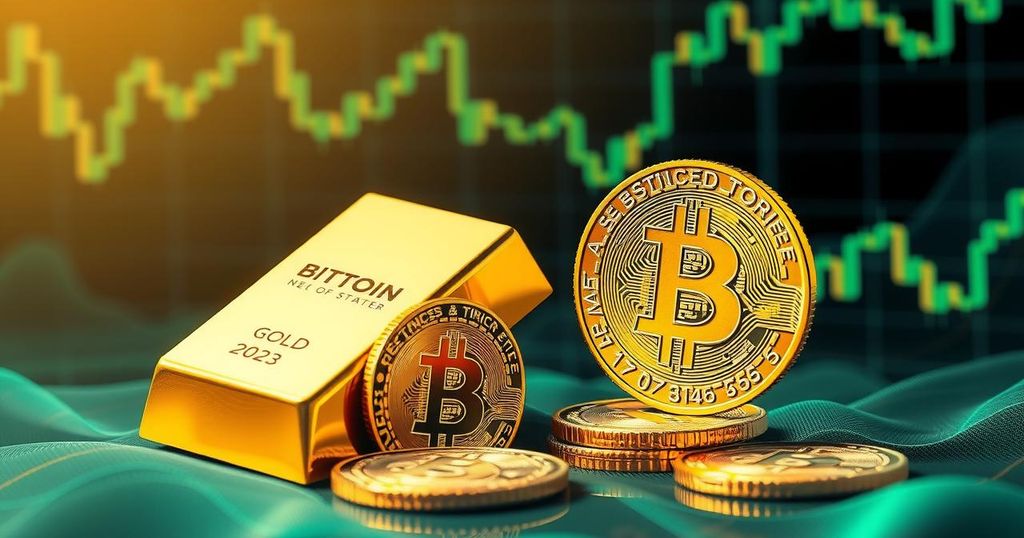Gold and Bitcoin: Diverging Paths in Today’s Market
Recent data reveals a split in the relationship between gold and bitcoin. As central banks stockpile gold, bitcoin has seen a decline amidst oversaturation of positive developments. While gold benefits from economic uncertainty and shifts in central bank policies, bitcoin’s vulnerability seems linked to its price dynamics with the Nasdaq and market behaviours. Historical context and maturation appear to influence their respective trajectories.
In recent months, a significant divergence has emerged between the performances of gold and bitcoin, raising eyebrows in the investment community. Notably, global central banks, especially from nations like China, India, and Russia, have been hoarding gold like never before. This trend comes amid uncertainties in various markets, with gold’s allure as a safe haven resurging as bitcoin shows signs of weakness.
From November 2022 to November 2024, the two assets were closely linked, with gold appreciating by 67% while bitcoin really took off, skyrocketing nearly 400%. Analysts had confidently predicted that this correlation would continue because both assets had been popular hedges against unstable global currencies. However, as of March 2025, gold gained 16% but bitcoin saw a decline over 6%, prompting experts to examine what led to this split.
One major factor behind bitcoin’s downturn seems to be the oversaturation of good news. Institutional adoption has certainly propelled bitcoin in recent years. Heavyweights like BlackRock and Fidelity have entered the scene, while countries like El Salvador have adopted it into their financial systems. The U.S. government’s long-awaited crypto reserve plans have added further legitimacy to bitcoin. New financial tools, like CME Group’s Bitcoin Friday futures, had opened the gates for retail investments, fuelling demand further.
Yet after reaching a record high of $109,000 in January, many investors seemed to cash out as soon as anticipated good news was confirmed, aligning with the typical market behaviour of “buy the rumor, sell the fact.” Furthermore, those tracking the Nasdaq may find bitcoin’s volatility familiar, leading to interconnected trading behaviours that can create downward pressure on bitcoin prices when the Nasdaq stumbles.
On the flip side, gold has been soaking up a lot of attention due to investor anxiety linked to economic instability and rising inflation fears. The Federal Reserve’s possible move towards a more lenient monetary policy has brightened gold’s prospects. More tellingly, central banks are acquiring massive amounts of gold—over 1,000 metric tons over the last three years, as per the World Gold Council.
This is attributed to a strategic shift away from U.S. dollar dependence, spurred by geopolitical tensions, notably following Russia’s invasion of Ukraine which froze many dollar-denominated assets. This cautious move has caused the percentage of global reserve holdings in dollars to drop from 60% in 2022 to about 57% now. While this may seem like a small shift, it’s clearly significant.
Interestingly, bitcoin’s troubles could be indirectly benefitting gold as investors might opt for the latter during turbulent times. Bitcoin’s market cap, currently around $2.8 trillion, might lead some to redirect their investments towards gold — a time-tested store of value.
Historically, gold’s reliability has made it a capital preserve since ancient times, while bitcoin is still relatively young, emerging only in 2011. Many argue it doesn’t yet have the maturity to be seen in the same light as gold. That said, Bitcoin’s swift evolution in the digital age shouldn’t be overlooked. This divergence in fortunes for gold and bitcoin underlines the complex dynamics at play, encompassing economic, political, and market-related factors.




Post Comment